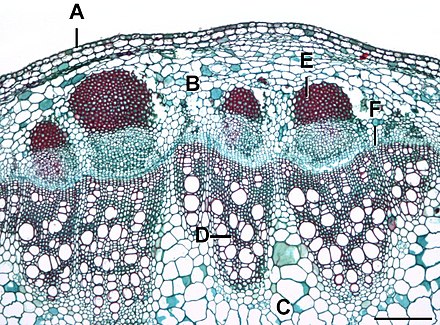
Back كامبيوم وعائي Arabic Cámbium AST Камбій Byelorussian Vaskularni kambij BS Càmbium Catalan Kambium Czech Inderbark Danish Kambium German Kambiumo Esperanto Cámbium Spanish

The vascular cambium is the main growth tissue in the stems and roots of many plants, specifically in dicots such as buttercups and oak trees, gymnosperms such as pine trees, as well as in certain other vascular plants. It produces secondary xylem inwards, towards the pith, and secondary phloem outwards, towards the bark.
In herbaceous plants, it occurs in the vascular bundles which are often arranged like beads on a necklace forming an interrupted ring inside the stem. In woody plants, it forms a cylinder of unspecialized meristem cells, as a continuous ring from which the new tissues are grown. Unlike the xylem and phloem, it does not transport water, minerals or food through the plant. Other names for the vascular cambium are the main cambium, wood cambium, or bifacial cambium.
© MMXXIII Rich X Search. We shall prevail. All rights reserved. Rich X Search